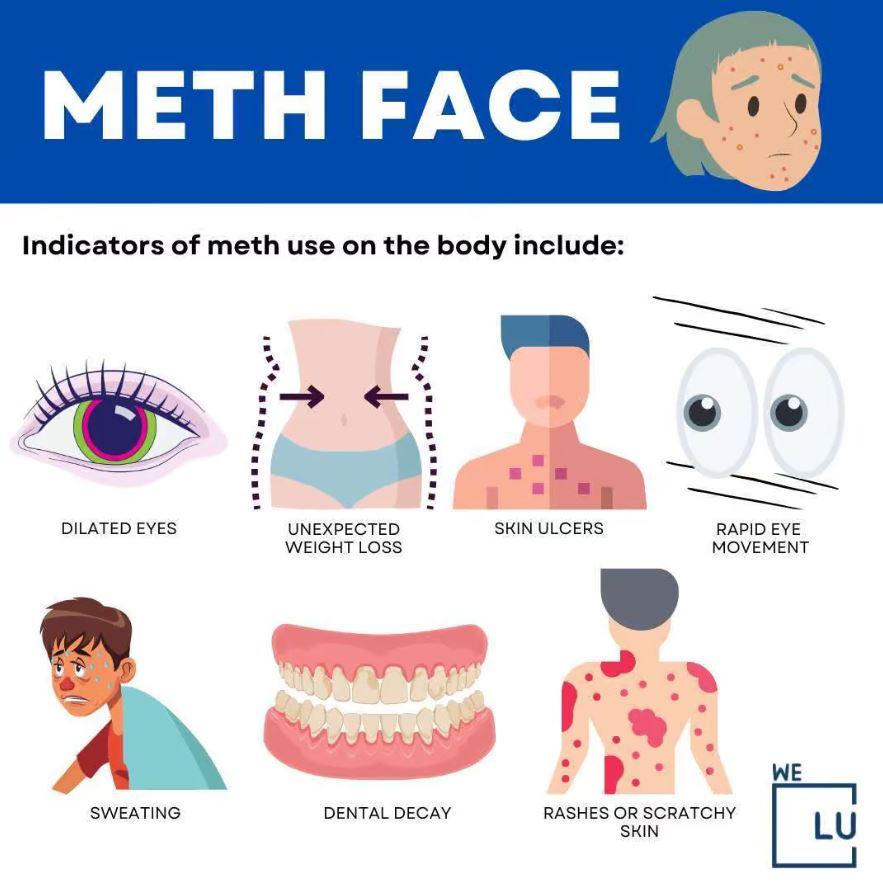Methamphetamine is commonly referred to as meth, is a highly powerful and addictive stimulant that wreaks havoc on the body and mind of its users. While the detrimental effects of methamphetamine on the brain and general health are well-documented, the impact to the skin often overlooked. Meth sores, also referred to as methamphetamine-induced skin lesions, serve as a visible reminder of the destructive consequences of meth abuse. These infected and painful sores are most often seen on exposed body parts like the arms, face, and legs, which serve as physical markers of the ravages caused by this fatal drug.
Understanding Methamphetamine-induced Skin Lesions:
Meth sores are a direct consequence of the physiological changes triggered by methamphetamine. The drug triggers a cascade of adverse effects on the body, such as a decrease in blood flow, impairment of wound healing, and an increased vulnerability to infections. These effects, when combined with the behavioral effects of methamphetamine abuse such as compulsive picking and scratching, contribute to the development of open and painful sores.
Location and Appearance:
Lesions of the skin caused by Meth can vary in appearance and extent. They typically begin as small red and itchy bumps that rapidly progress into larger, open sores. These lesions can be found all over the body but are most commonly observed on the arms, face and legs. The visibility of these lesions increases the psychological and social implications meth lesions become difficult to hide and could be stigmatizing for individuals struggling with addiction.
Health Risks and Complications:
The open meth sores' nature puts people at risk of an increased chance of contracting an infection. Bacterial infections, like cellulitis, may result from the introduction of pathogens into the wounds which are not closed. In addition, the repetitive picking and scratching associated with methamphetamine abuse increase the chance of developing secondary infections, which can lead to the tissue to suffer further destruction. In the worst cases, infections may spread throughout the body and cause life-threatening complications.
Psychosocial Impact:
Beyond the physical repercussions The psychological effects of meth-related sores should not be ignored. The obvious and traumatic nature of meth sores often leads to extreme social isolation, diminished self-esteem, and diminished quality of life for individuals affected. The presence of meth lesions may trigger negative reactions from others, thereby perpetuating societal stigmas and preventing their reintegration in society.
Treatment and Prevention:
To treat meth sores, you must employ an array of approaches that address both the addiction and resultant skin lesions. A comprehensive addiction rehabilitation program that include counseling, behavioral therapy, and medical interventions, are vital for tackling methamphetamine dependence. Also, dermatological procedures such as wound care antibiotics for treating infections, and scar management can help improve the skin's appearance and aid in healing.
Prevention is equally crucial. Public awareness campaigns that emphasize the physical consequences of methamphetamine addiction can deter potential users and encourage individuals struggling with addiction to seek assistance. Accessible addiction treatment along with support systems play an integral part in preventing the development of meth sores by dealing with the root of the issue.
Conclusion
Methamphetamine-induced skin lesions, commonly known as meth sores, serve as a stark reminder of the detrimental impact of methamphetamine abuse on the skin. The painful and visible lesions on the arms, face, and legs illustrate the toll taken by this destructive drug. Beyond the physical damage, the psychosocial repercussions of meth sores are a further source of challenges faced by those affected. By increasing awareness, encouraging the prevention of meth sores, and delivering a thorough treatment, the community can work toward reducing the frequency of meth sores, and assisting individuals on the path towards recovery.
Also check: Pass a methamphetamine drug test

Comments
Post a Comment